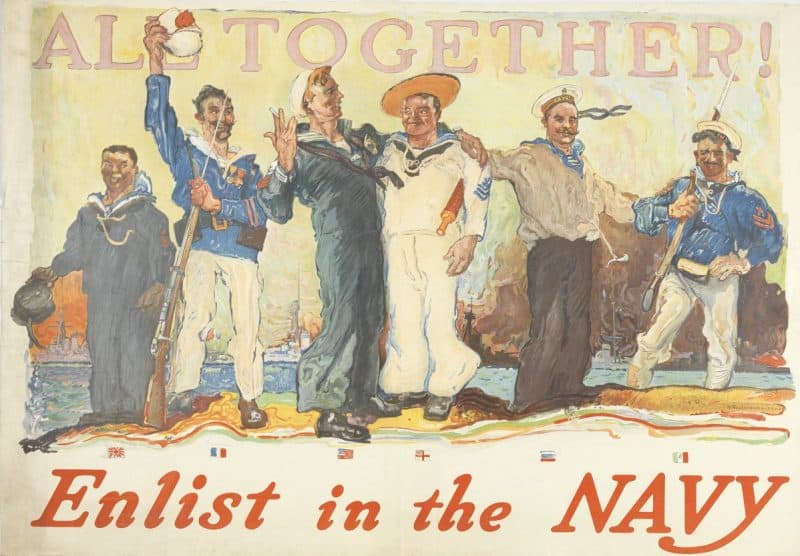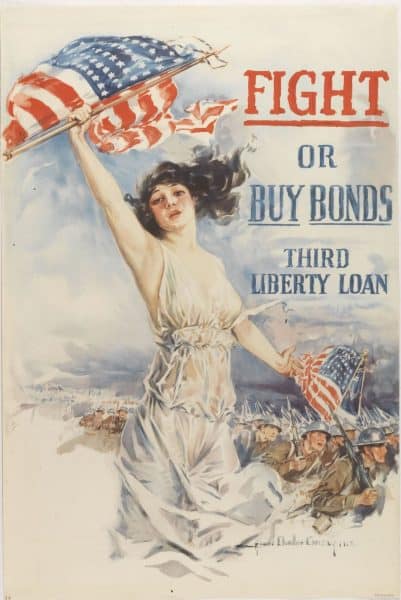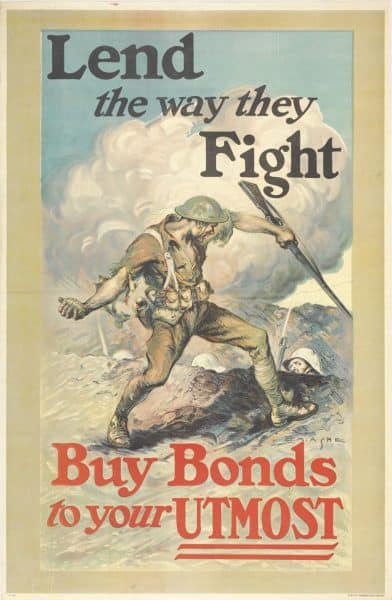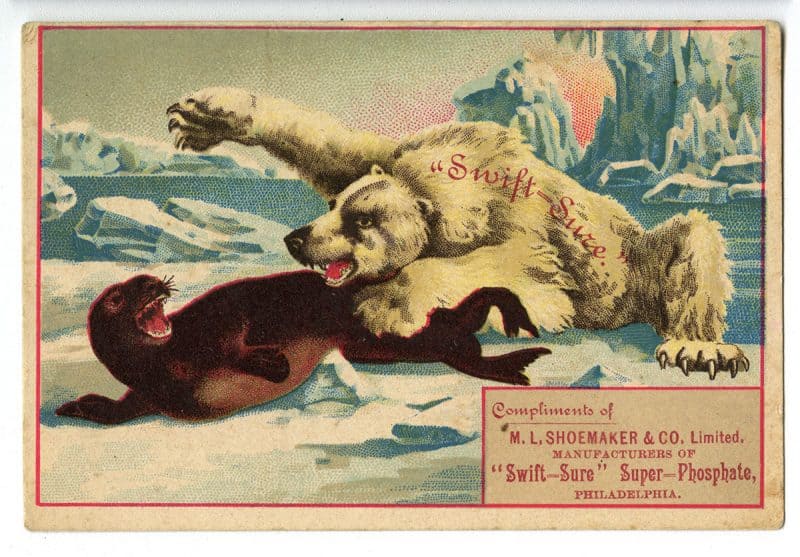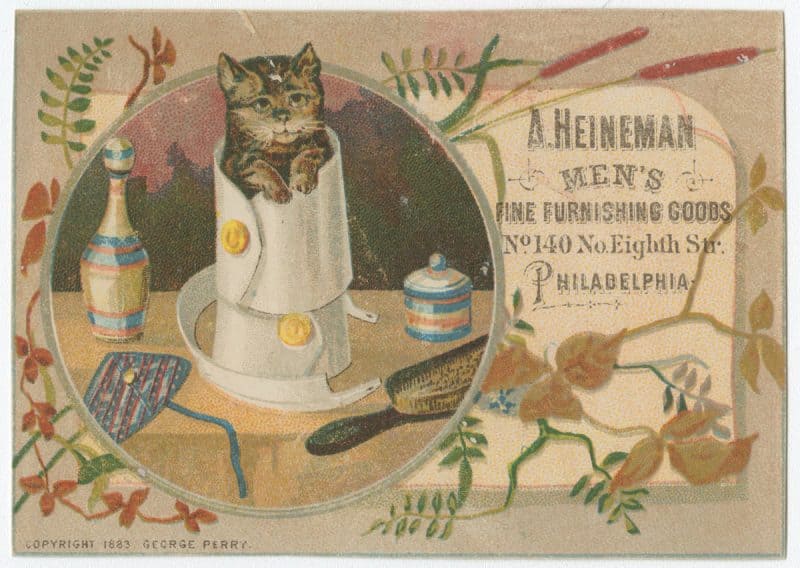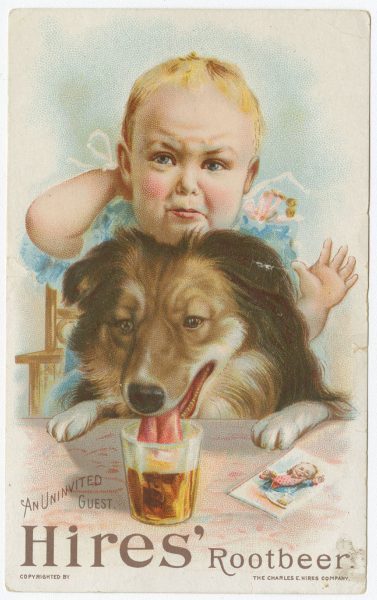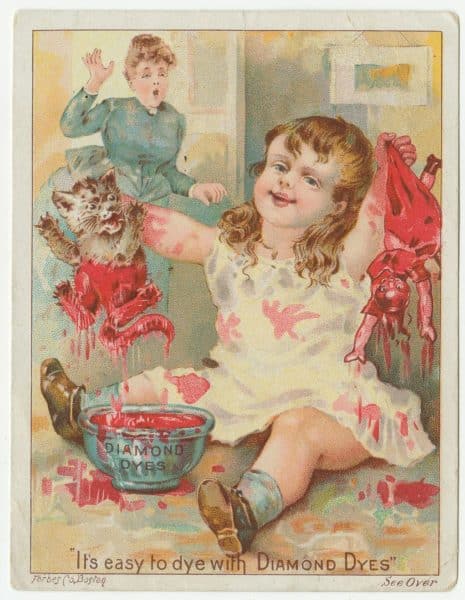Enduring Ephemera: Trade Cards and Posters in the Print Department
Prior to interning at the Library Company, I was unaware of the word “ephemera.” I had to look up the definition before writing this blog post. Webster defines ephemera as “paper items (such as posters, broadsides, and tickets) that were originally meant to be discarded after use but have since become collectibles.” During my internship with the Print Department, I have worked primarily with two forms of ephemera: trade cards from late 19th-century Philadelphia and American posters produced during World War One. When I began my internship, interacting with these documents felt alien. Posters addressing a war that occurred a century ago and advertisements directed towards an audience from the later 1800s are strange to encounter. I did not understand the humor in the trade cards or how an early 20th-century American audience would respond to such cheerful representations of war. After describing 300 posters and handling over 1000 trade cards, I began to recognize similarities between the current American culture I’m familiar with and the American culture that this ephemera was created in. I began to realize that these posters and trade cards had been produced for and by Americans. Although I was viewing them from a different era, I was still able to recognize and identify with various themes that occurred in them.
Patriotism was a running theme in the posters. With bright and cheerful color schemes, the posters enticed young men to join the ranks and citizens to conserve food or buy Liberty Bonds. Having grown up in a more cynical, post-9/11 world, these bubbly depictions of wartime seemed on the borderline of bizarre. The military recruitment advertisements of my time have more camo tones than they do cheerful yellow and blue ones. However, I was still able to recognize the reverential attitude that current Americans still hold toward those in the Armed Services. Soldiers were portrayed as strong and proud men, their bravery and sacrifice shown to be something all Americans should aspire towards.
Henry Reuterdahl, All Together! Enlist in the Navy (United States, 1917).
A group of soldiers from different countries gathers together. Their body language and the color scheme create a jovial atmosphere. Click Here for the Catalog Record
The trade cards, physical remnants of America’s Gilded Age, were initially even more foreign to me than the posters. Somewhere between a business card and postcard, most trade cards were printed as chromolithographs. It was not uncommon for the illustrations printed on the trade cards to have little to no relevance to the product or service being advertised. A nude boy with butterfly wings posing with owls wearing bonnets sell curtains and furniture, and a seal fighting a polar bear on top of an iceberg advertises “super-phosphate” fertilizer. After encountering more of these trade cards, my bewilderment turned into amusement. The trade cards appealed to people’s human interest, which has not drastically changed over the centuries. For example, cats and dogs are often portrayed being cute. Childhood is often portrayed in an affectionate manner, appealing to Victorian scrapbookers who would paste trade cards into albums. By becoming familiar with Gilded Age-era trade cards and World War One-era posters, I began to see how today’s American culture remains similar to the culture that existed over a century ago.
Juliana Benitez, Haverford College ‘20
Hurford Center Summer Intern 2017
Howard Chandler Christy, Fight or Buy Bonds (United States, 1918).
This poster contains an example of a “Christy Girl,” a beautiful woman illustrated by Howard Christy. The poster implies that all Americans can contribute to the war, whether through fighting or loaning money to the government. Click Here for Catalog Record
Edmund M. Ashe, Lend the Way They Fight (United States, 1918).
A soldier throws a grenade over a trench. The patriotic depiction of war rallies Americans to financially support the war. Click here for the Catalog Record
Walraven’s Curtain & Furniture Warehouse, 1105 Chestnut St., Phila. (Philadelphia, ca. 1880).
A nude child with wings stands besides clothed owls. Even the owls seem confused.
L. Shoemaker & Co., “Swift-Sure” Super-Phosphate, Venango St. and Delaware Ave., Philadelphia (Philadelphia, ca. 1880).
A seal and a polar bear fight on top of an ice berg. The scene has no relevance to the fertilizer being advertised.
Heinman Men’s Furnishing Goods, No. 140 No. Eighth Str. Philadelphia. (Philadelphia, ca. 1883).
A kitten stands in a cuff. While this illustration is related to the product being sold, men’s furnishing goods, this advertisement depends on the audience being amused by the kitten.
Hires Root Beer (New York: J. Ottman Lith. Co., ca. 1880-1883).
A child cries as a dog drinks a glass of root beer. This trade card portrays a relatable scene, with the dog and baby being portrayed affectionately.
“It’s Easy to Dye with Diamond Dyes.” (Boston: Forbes Co., ca. 1885).
A young girl proudly holds up a recently dyed kitten and doll while a woman watches in horror. Click Here for the Catalog Record

